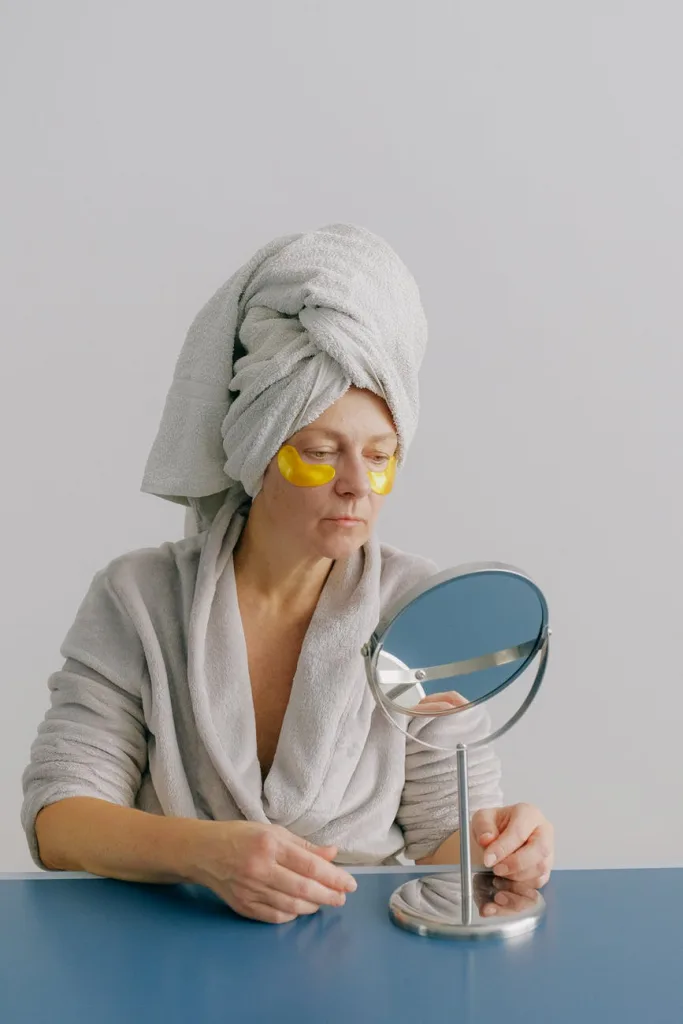Many people have lines in their eyes. They are a normal and harmless part of the ageing process. The skin tends to lose its ability to heal and improve as people grow older. The skin is particularly vulnerable to the ageing process in the region underneath the eye because it is thin. As a consequence, wrinkles under the eyes are normal over time.
Collagen and elastin – two proteins that help our skin remain plump, firm and elastic – often slow down, contributing to losing areas, sloppy skin on the face, neck and other parts of the body. If you’re disturbed by skin laxity, there are non-invasive skin tightening treatments that can stop that and temporarily restore a firmer, smoother, younger look with little to no downtime. One of these treatments is called Botox, which you can learn more about in this informative post.
In this article, you will explore how wrinkles develop as well as learn the reasons for various forms of under-eye wrinkles.
Types of Under-Eye Wrinkles
There are many kinds of wrinkles, and below are some of the common ones:
Wrinkle Folds
The deterioration of the face structures due to age induces folding of the wrinkles. These can generally occur under the eyes in the groove between the nose and mouth. This mostly happens to people undergoing the process of ageing.
Dynamic Wrinkles
Over time, dynamic wrinkles can be caused by the repetitive muscular contraction under the skin. These tend to occur when muscles are used — making funny faces, for example. Usually, dynamic wrinkles form on the front and between the eyebrows. Crow’s feet are also a case of dynamic wrinkles, which are wrinkles near the eye area.
Static Wrinkles
Damage to the skin causes static wrinkles that remain evident even though the muscles of the face rest. Dynamic wrinkles can possibly become static wrinkles over time. Sun exposure, smoking and poor diet can all lead to static wrinkles. That’s why it’s best to keep a healthy lifestyle if you want to avoid this skin issue.
Treatment Solutions
With all the possible skin issues that can happen, there are ways to halt or treat them. Here are some of the common treatment solutions:
Medical Treatments
Many cosmetic and medical procedures are required for wrinkles, especially for those skin issues that are more severe. These are typically more powerful than home remedies and cosmetic products, but their side effects are also greater. Popular procedures include the following:
Dermal Fillers
People avail dermal fillers to restore fullness to hollow areas, especially those that develop in the under-eye area. During the treatment procedure, the doctor will inject collagen or hyaluronic acid (two of the commonly used filler substances) into the skin underneath the eye. You will notice that the results are immediate. Since the treatment can be quick, so does its results. Under-eye wrinkle improvement from fillers will usually only last up to a year depending on the type of filler used.
Bleeding, infection, and bruising are some of the side effects that can happen if the patient is allergic to the filler substance used on them. In rare cases, vascular occlusion may result in fillers, causing the death of the tissue.
Facial Rejuvenation
A qualified health care practitioner injects into the skin a substance called botulinum toxin, or Botox, during facial rejuvenation. People like to use this to handle dynamic wrinkles such as crow’s feet. It works by preventing the muscles from shifting under the wrinkles. Improvement is typically 3-4 months in length. Long-term muscle paralysis and irreversible damage of the eye are potential adverse events. But, if you’re going to have the treatment done by a well known aesthetic doctor, then there’s nothing to worry about.
Cosmetic products
Hundreds of anti-ageing cosmetics and eye creams are available at pharmacies or over-the-counter, but there is little proof that they are effective. The American Dermatological Surgery Society warns people to be aware of purchasing any product that promises miraculous results.
Anti-ageing skincare items are recommended by the American Academy of Dermatology (AAD) under these terms:
- Using humidifiers to reduce fine eye lines and wrinkles
- Find a product specially designed by the manufacturers to treat wrinkles
- using products appropriate for your skin type
- Find hypoallergenic and non-comedogenic or non-acnegenic products
AAD suggests to people that anti-ageing skincare products have reasonable standards and points out that these only appear to show moderate results.
In-Home Treatments
Many people want to opt for home remedies to improve wrinkles between the eyes. Different home remedies have been common for many years, such as putting cucumber slices on the eyes or applying banana face masks, but little scientific evidence has shown that these approaches are working.
However, evidence indicates the potential to resist wrinkles by polyphenols, a chemical compound found in foods like green tea and pomegranates. Moreover, an earlier study showed that the presence of fine lines and wrinkles could be decreased with vitamin C creams.
Preventive Steps
A wrinkle is an unavoidable aspect of old age, but people can avoid it. These comprise:
- Every day, wearing sunscreen of at least 30 SPF
- Stay hydrated
- Skip tanning sessions
- Quit or avoid smoking
- Avoid overexposing your skin to the sun
